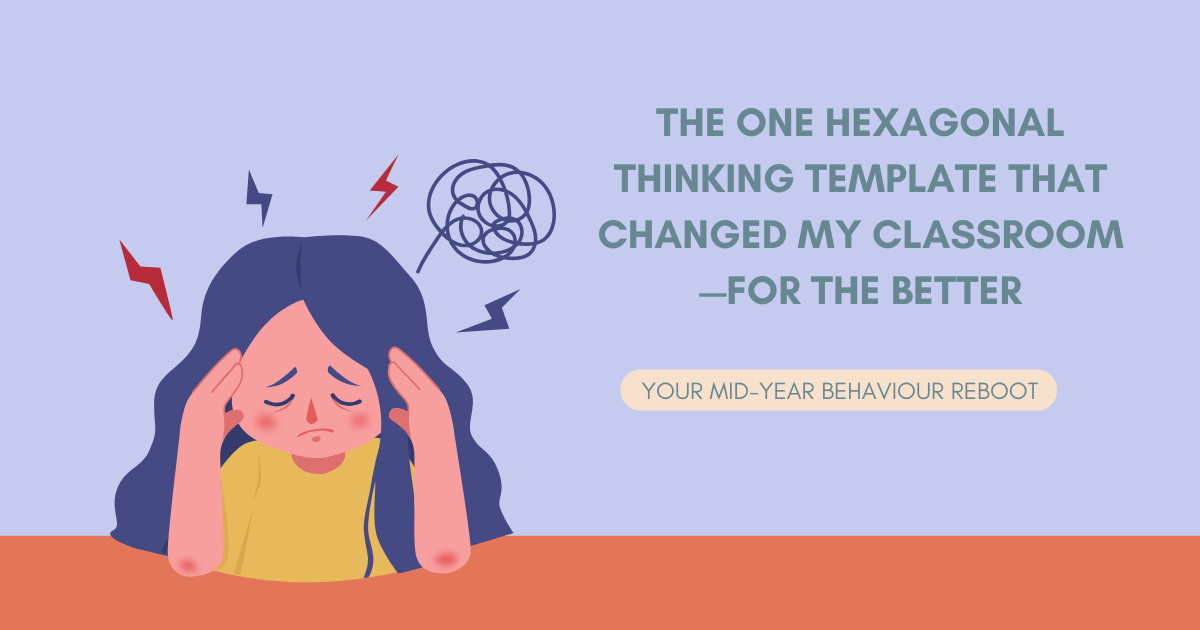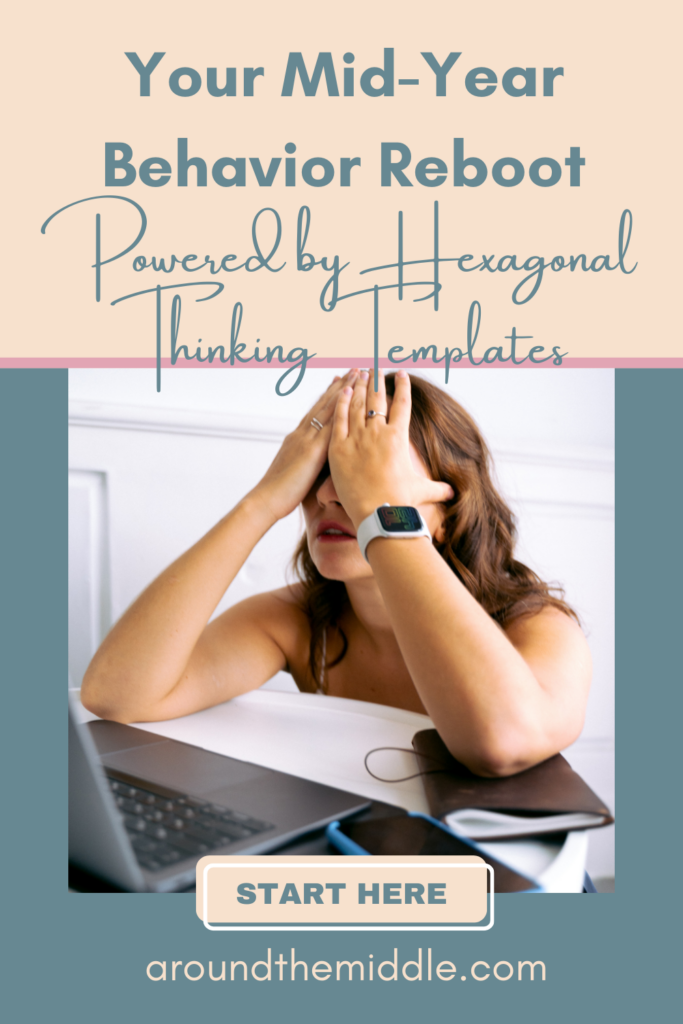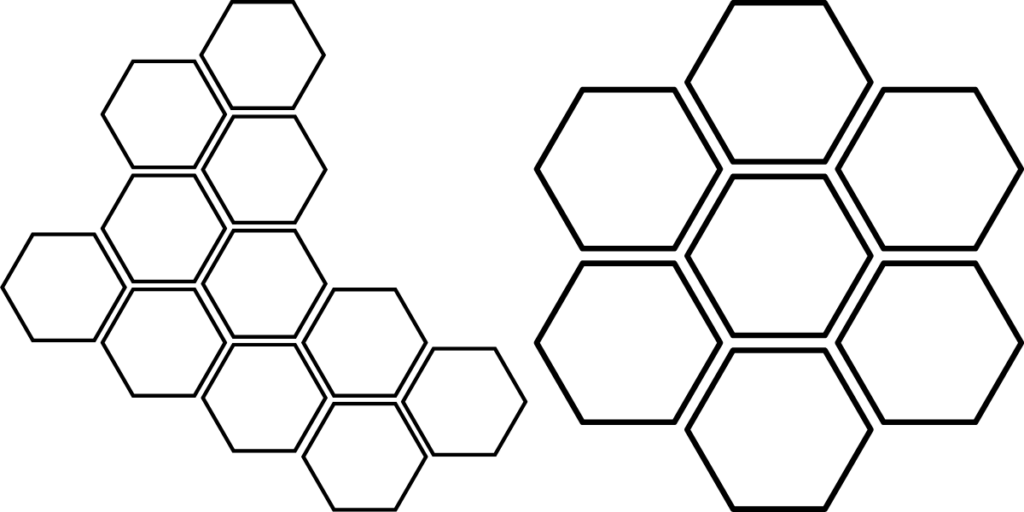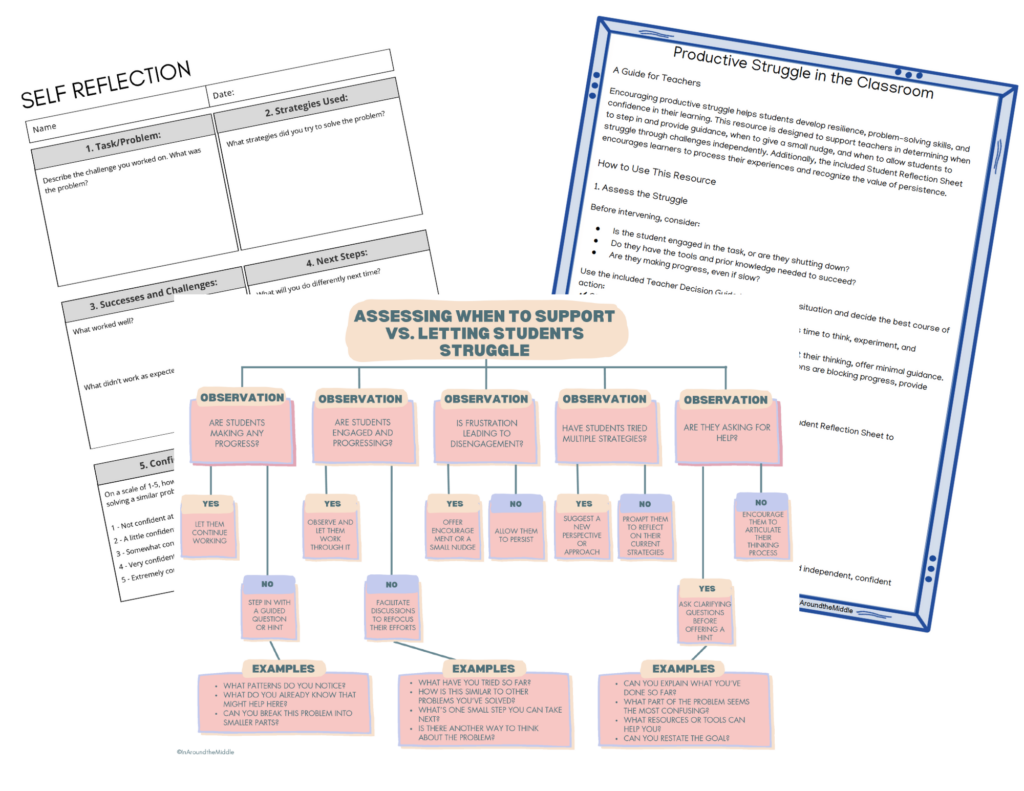The One Hexagonal Thinking Template That Changed My Classroom—for the Better
You know that time of year—when everything starts to unravel a bit. Students get more restless, patience runs thinner, and the quality of work starts slipping. You’re doing more managing than teaching, and by the end of the day, you’re wiped.
Sometimes a break helps, but often, it’s not enough. That’s when it’s time to revisit expectations—without slipping into lecture mode. And that’s where a hexagonal thinking template can really come in handy.

What Is Hexagonal Thinking, and Why Use It Now?
If you’re wondering what is hexagonal thinking, it’s a flexible, student-centred strategy that gets kids making connections between ideas using hexagon-shaped tiles. The real power lies in the discussion and justification of those connections. It was first introduced (I think) by Betsy Potash in 2020.
I’ve used this strategy across subjects—from goal setting to novel studies—but today, I’m sharing a hexagonal thinking activity focused on classroom behaviour. It’s a practical, engaging way to get students to reflect on what’s working, what’s not, and what needs to change.
Setting Up Your Hexagonal Thinking Activity

Here’s a quick breakdown of how I run this behaviour reset lesson:
- Group students in threes or fours. (I assign them ahead of time and have the groups on the board.)
- Hand out:
- A set of hexagonal thinking templates (pre-cut or ready to cut)
- A blank A3 sheet
- Give cutting instructions:
- Cut strips and divide the work
- Snip around each hexagon
- Sort by colour
On the board, I list what each colour category represents. This gives them a direction without limiting their ideas. For this activity, I chose these:
- Orange – Positive Behaviours
- Yellow – Consequences of Negative Behaviours
- Blue – Consequences of Positive Behaviours
- Purple- Negative Behaviours
Give Students Ownership of the Process
If your students are new to this, offer hexagonal thinking instructions for students with some guiding questions. If they’ve done it before, keep it simple: “Let’s explore the connections between positive and negative behaviours. What’s helping us learn? What’s getting in the way?”
Remind them not to glue anything yet. Instead, place the hexagons on the paper, draw arrows between related ideas, and write short notes above the arrows to explain their thinking. This rough draft stage allows for flexible thinking and group discussion.
As they work, circulate. Observe. Ask questions—but don’t hover. Keep your role minimal. This is about their productive struggle and self-awareness. If you need help guiding that, I’ve got a free teacher’s guide for productive struggle and blog posts on Embracing Productive Struggle and Gamified Lesson and Productive Struggle.
Making It Permanent
Once students are confident with their connections, they grab a clean A3 sheet, glue down the hexagons, and tidy up their arrows and explanations. I wrap up with a quick gallery walk: groups rotate and view each other’s ideas (a minute per group works well with a timer).
Before they leave, each student completes a short reflection sheet (you can grab my free one here). The first time takes longer, but it gets quicker with each round.
Extension: Personal Connections with Individual Hex Maps
The next day, I extend the learning with a personal hexagonal thinking example. I give each student a different layout:
- A circular hexagon cluster with one central idea
- A winding, snake-like layout for more directional thinking
Both options push them to reflect on how their own actions affect the classroom community.

Want to Try This Without the Prep?
You can create your own set—here’s my blog post on how to make a hexagonal thinking template from scratch. But if time’s tight (when is it not?), you can grab my ready-to-use hexagonal thinking templates for:
They come with digital and PDF options, teacher instructions and teacher guide, guiding questions, plus student-friendly layouts and reflection tools and even a marking rubric.
Oh—and don’t forget to download your free productive struggle guide to help make this activity run smoothly.
Final Thoughts
This hexagonal thinking activity isn’t about perfection—it’s about helping students take ownership of their learning environment. It gets them thinking, reflecting, and talking. And that’s exactly the kind of reset we all need when things start slipping.
Happy teaching—and here’s to fresh starts.







